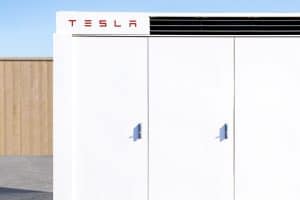- ⚡ Ford will idle the production of the F-150 Lightning from November 15, 2024, to January 6, 2025.
- 🏭 The production halt will affect approximately 800 workers at the Rouge Electric Vehicle Center.
- 🚧 Previous production pauses were implemented over undisclosed quality issues and resulted in workforce reductions.
- 🔄 This delay impacts Ford’s plans for the 2025 Model, postponing its production to 2025.
- 📈 Despite challenges, the Lightning saw an 86% year-over-year sales gain in the first three quarters of the year.
In the rapidly evolving world of electric vehicles, Ford’s announcement to idle the production of its F-150 Lightning is significant. Scheduled from November 15, 2024, to January 6, 2025, this pause will impact not only the output of the iconic electric pickup but also the workforce and market dynamics. What does this mean for Ford, its employees, and the broader EV landscape? Let’s delve into the intricate details.
Understanding the Production Halt
Timing and Scope
Ford’s decision to pause production at the Rouge Electric Vehicle Center affects approximately 800 workers. Among these, 750 are hourly workers whose livelihoods will be directly impacted. The plant, a symbol of Ford’s ambition in the electric vehicle (EV) sector, now faces a period of uncertainty.
Historical Context and Recurring Issues
This is not the first time production has been halted. Earlier this year, a pause was necessitated by undisclosed quality issues. Such interruptions can ripple through the company, affecting workforce morale and strategic timelines. Previously, workforce reductions ensued, a pattern that merits concern for both Ford’s management and its employees.
Implications of the Delay
Impact on 2025 Model Plans
Originally, Ford intended to commence the production of the 2025 F-150 Lightning in November 2024. However, the current delay pushes this timeline into the new year. This shift poses questions about Ford’s production agility and its ability to meet market demands swiftly.
Sales Performance Amidst Challenges
Despite these setbacks, the F-150 Lightning has demonstrated resilience in the market, boasting an impressive 86% year-over-year sales gain in the first three quarters of the year. This indicates a robust consumer interest and confidence in the brand, even as it navigates production hurdles.
Analyzing the Bigger Picture
Impact on Sales and Market Dynamics
The halt can influence sales trajectories in the coming quarters. Delays might affect customer confidence and potentially open avenues for competitors to capture market share.
Reasons Behind Recurring Pauses
Understanding the reasons behind repeated pauses is crucial. While quality control is paramount, frequent interruptions signal deeper issues in production management or strategic alignment.
Comparative Analysis with Competitors
In the competitive landscape, the Tesla Cybertruck reigns as the top-selling all-electric pickup in the U.S., overtaking the F-150 Lightning. Concerns about Ford’s ability to maintain its position in light of production challenges suggest a need for strategic recalibrations.
Moving Forward: Strategic Considerations
Enhancing Production Efficiency
Ford must tackle underlying production issues promptly to prevent future halts. This involves streamlining quality control processes and possibly investing in workforce training to mitigate errors.
Worker Impact Mitigation
Supporting the affected workforce during this pause is imperative. Strategies might include offering professional development programs to equip workers for shifts in industry demands.
Strengthening Competitive Positioning
Maintaining a strong brand presence despite production challenges will require targeted marketing strategies and product innovation to keep consumer interest piqued.
Conclusion
Ford’s temporary pause in the F-150 Lightning production is a pivotal moment for the company and the EV industry. While challenges exist, the opportunity to refine processes and reinforce market position is within reach. With strategic foresight and enhanced operational efficiency, Ford can navigate this complex landscape and emerge more robustly.





